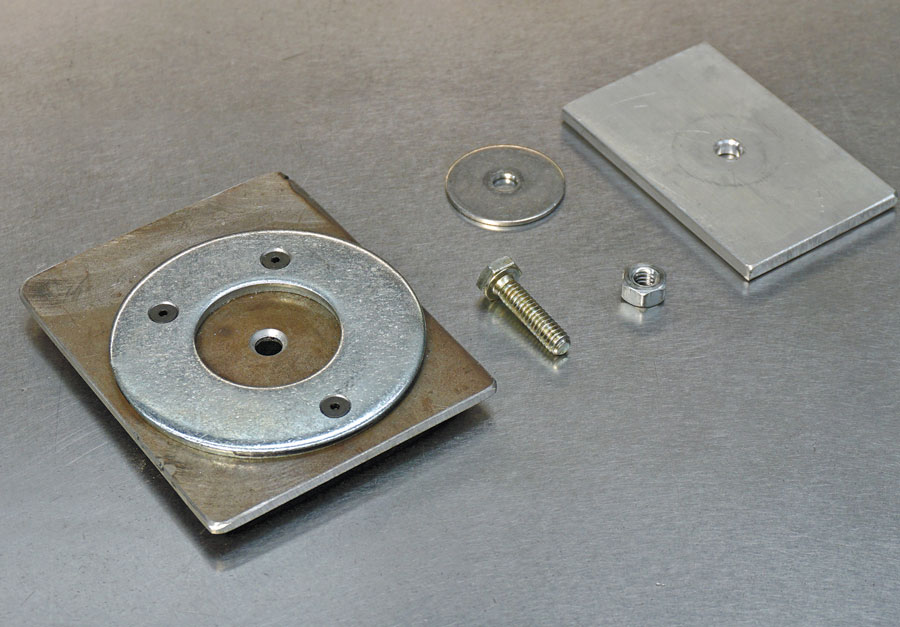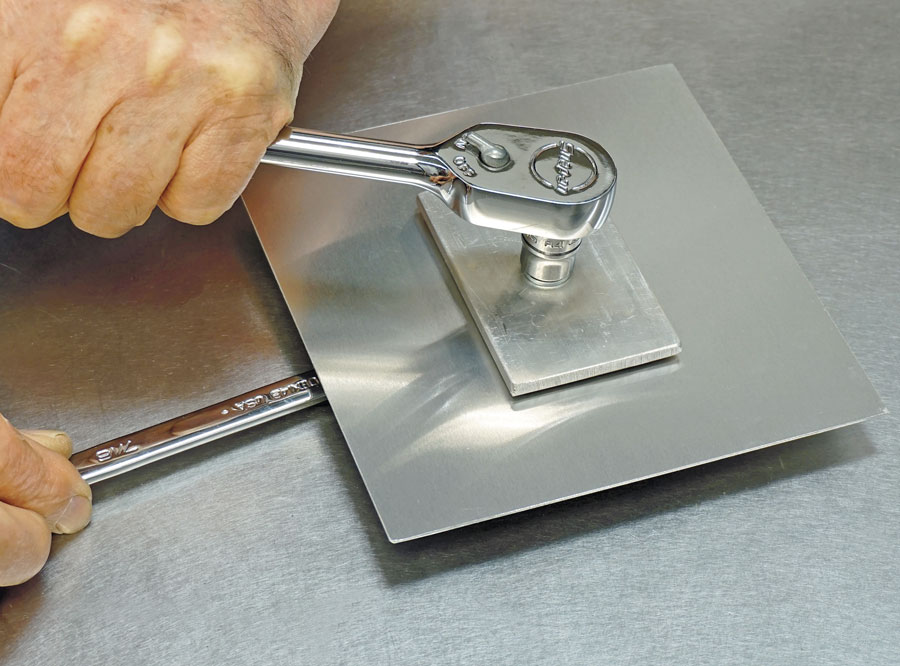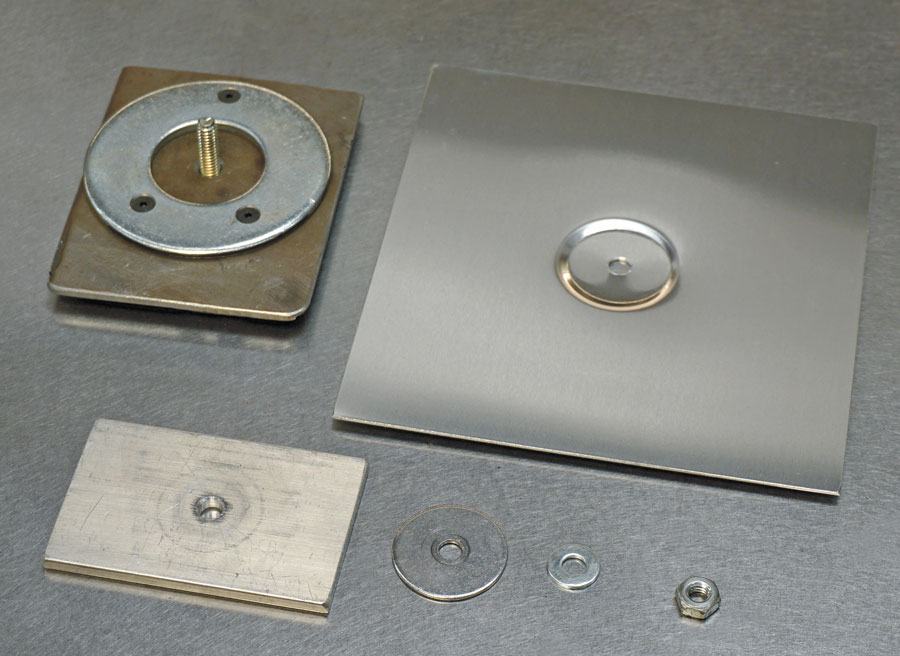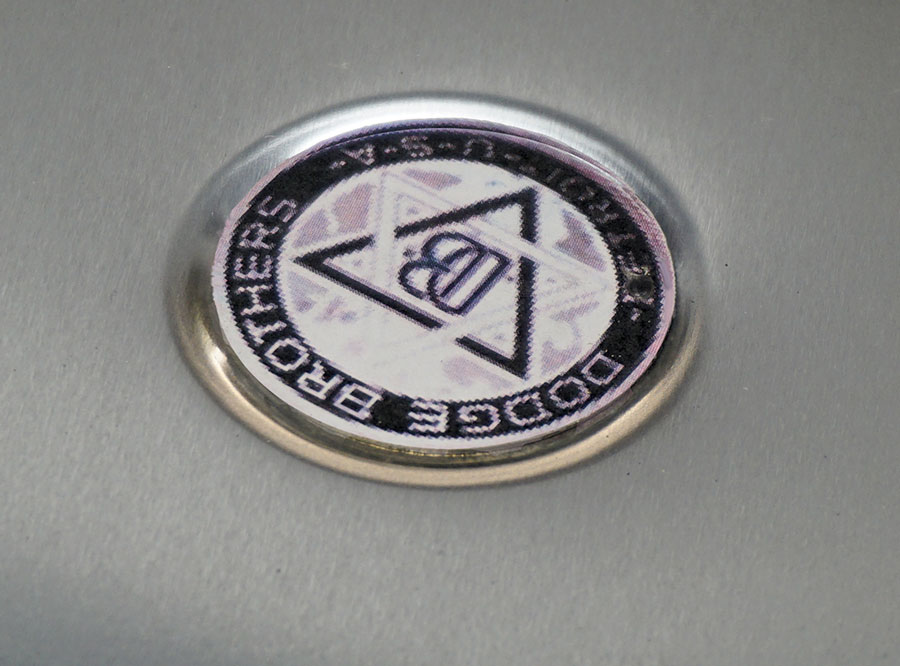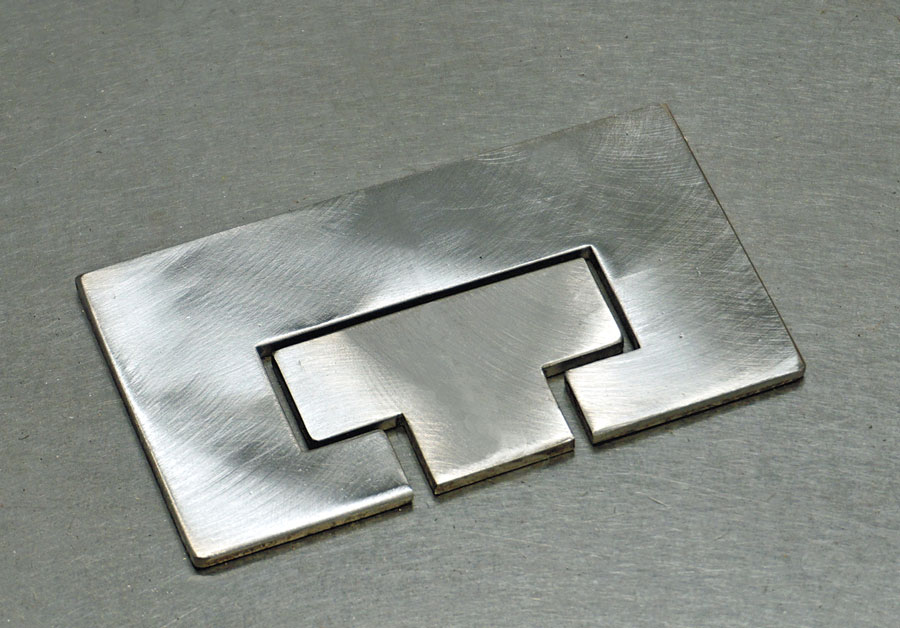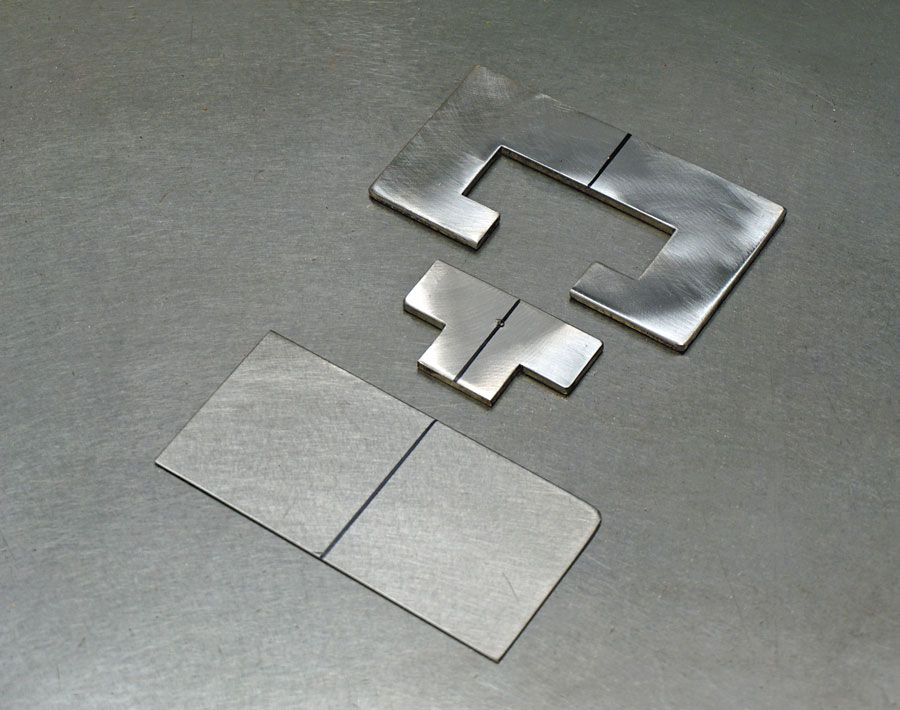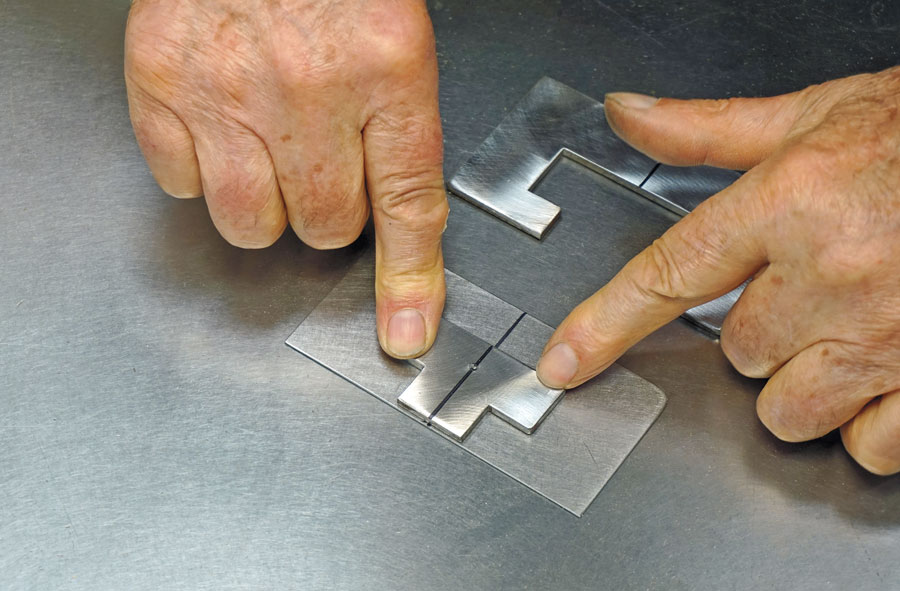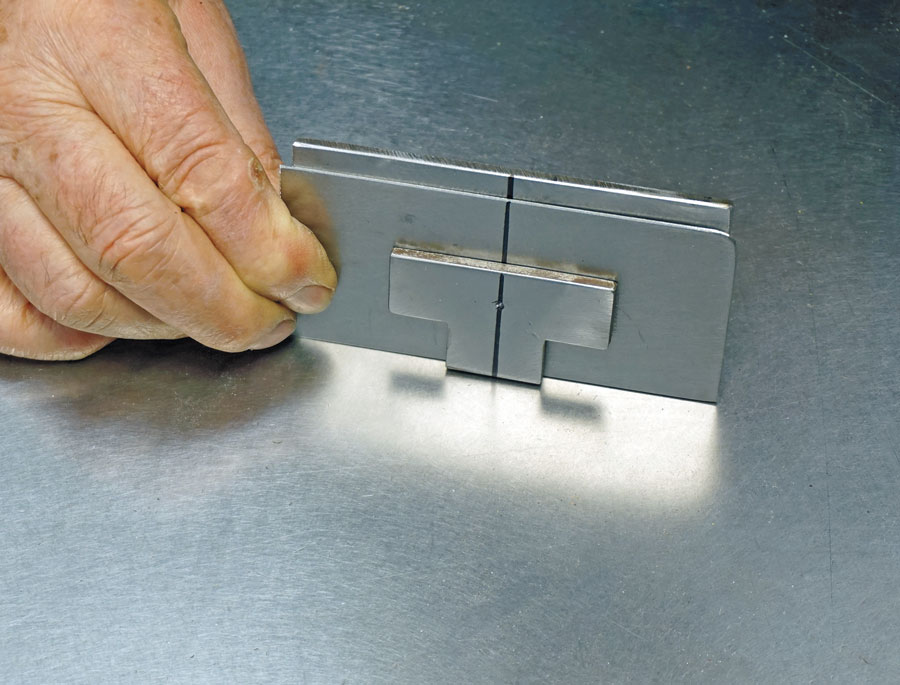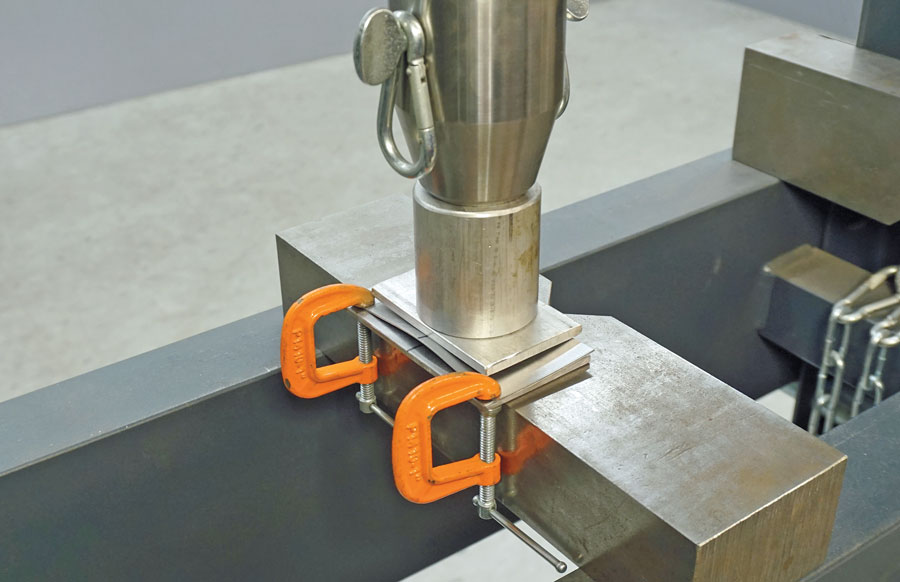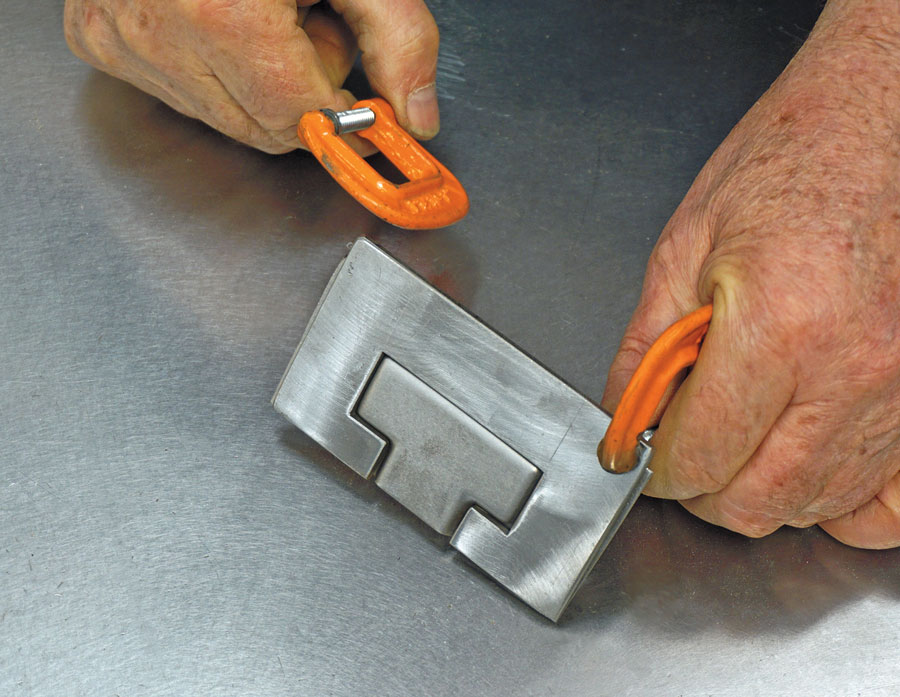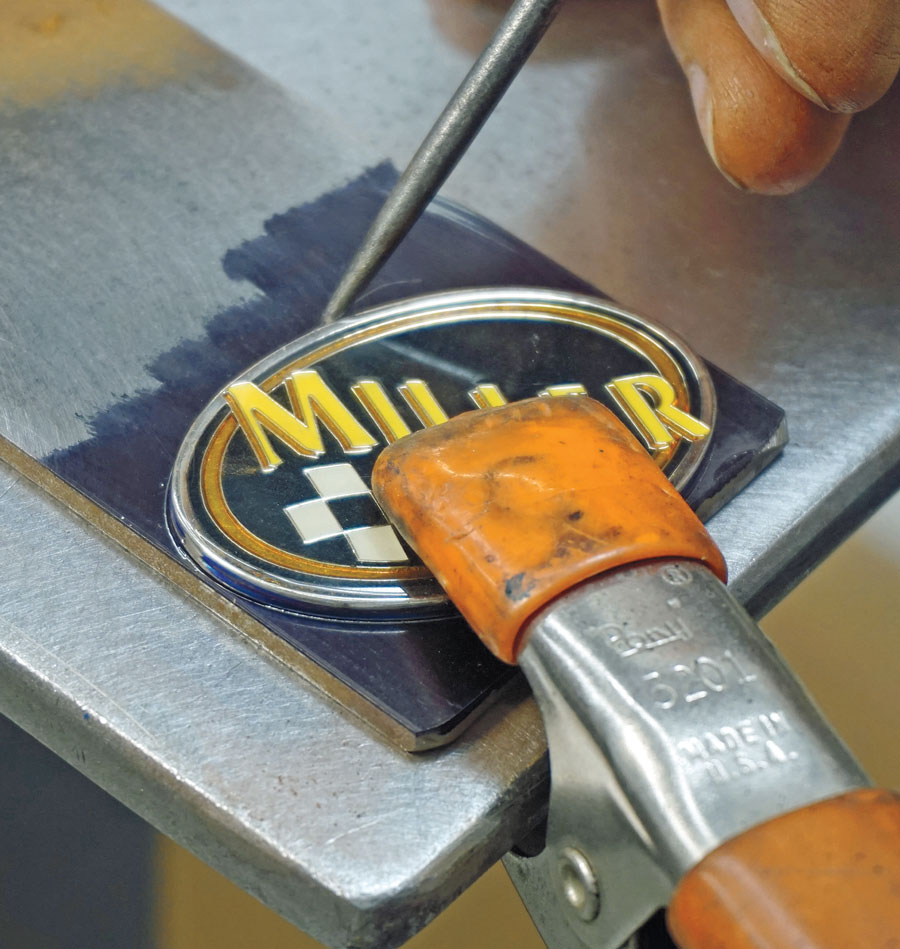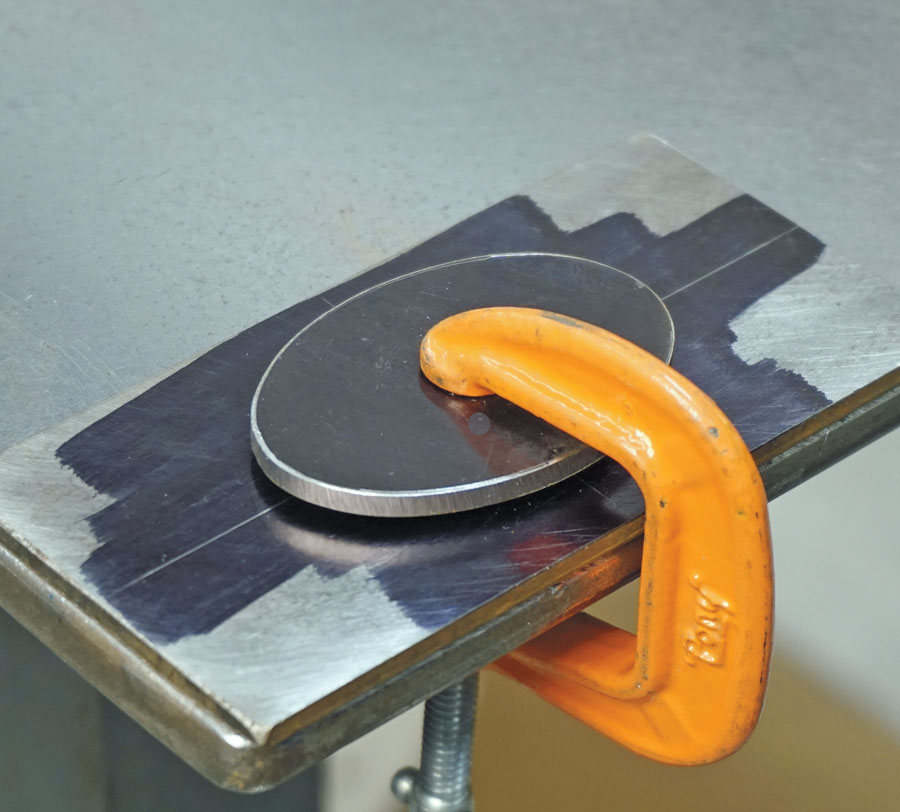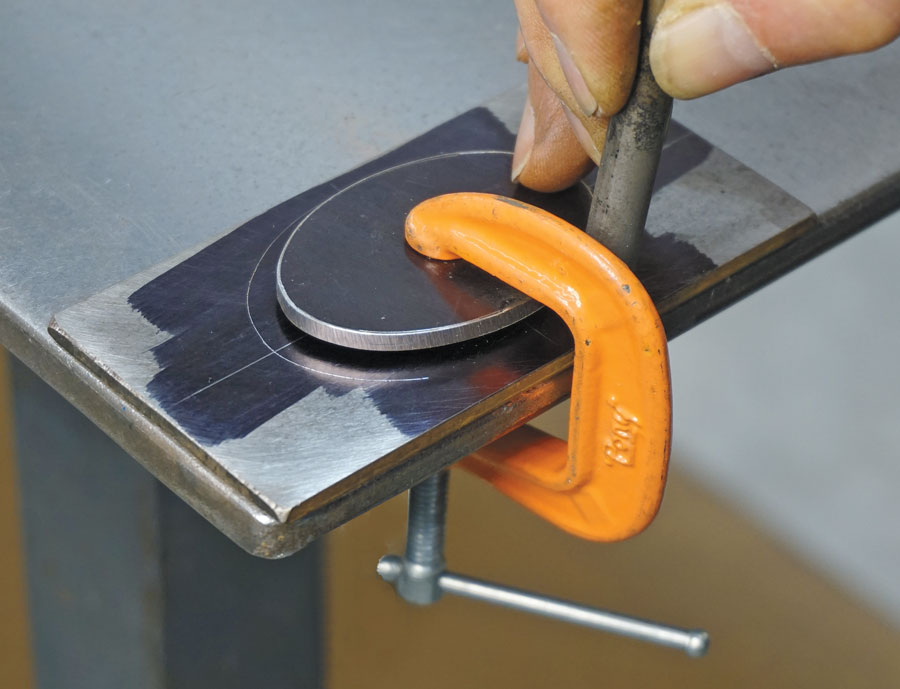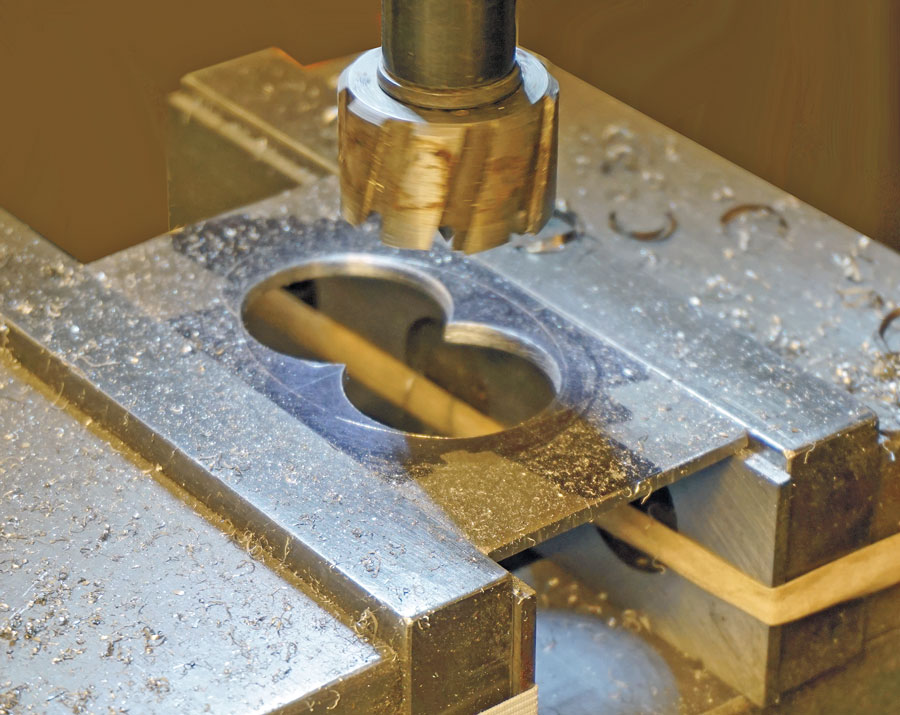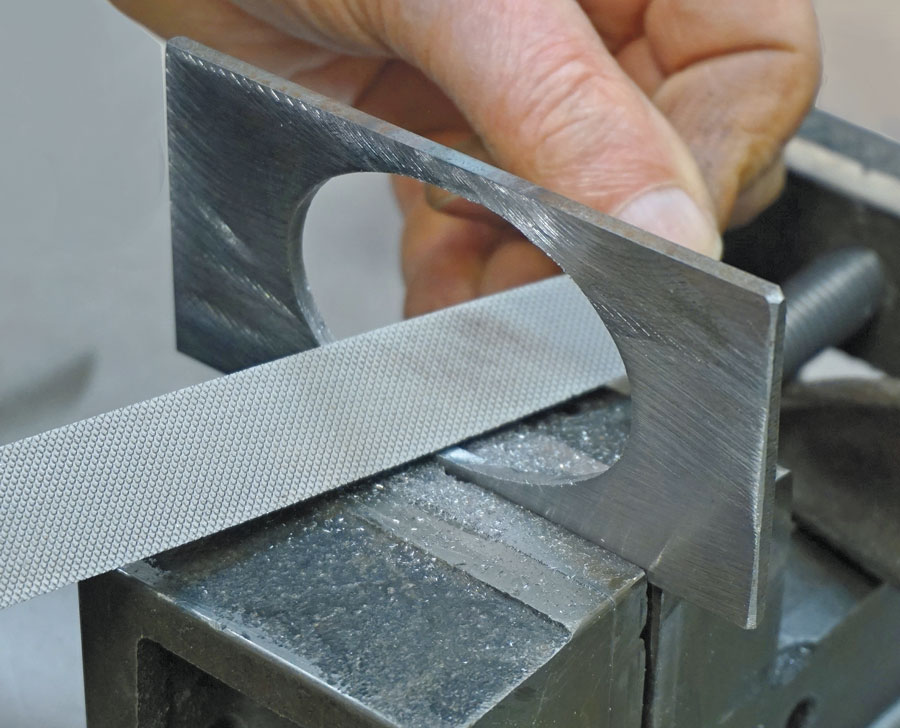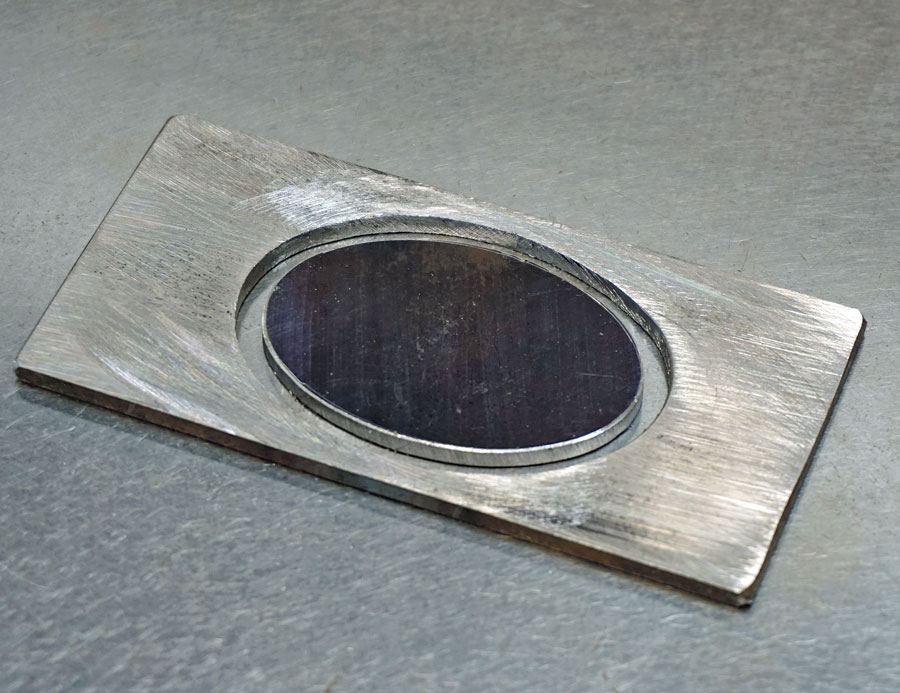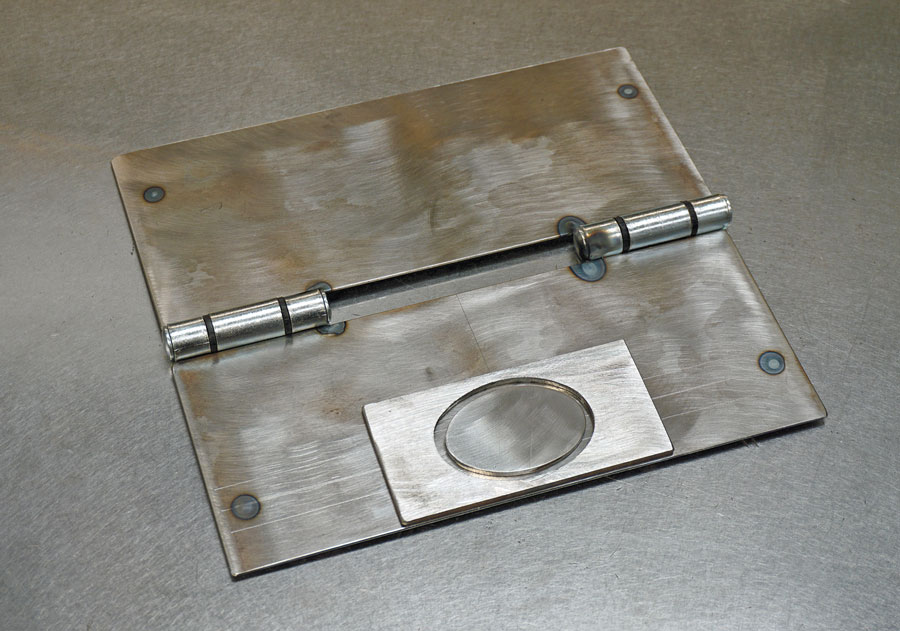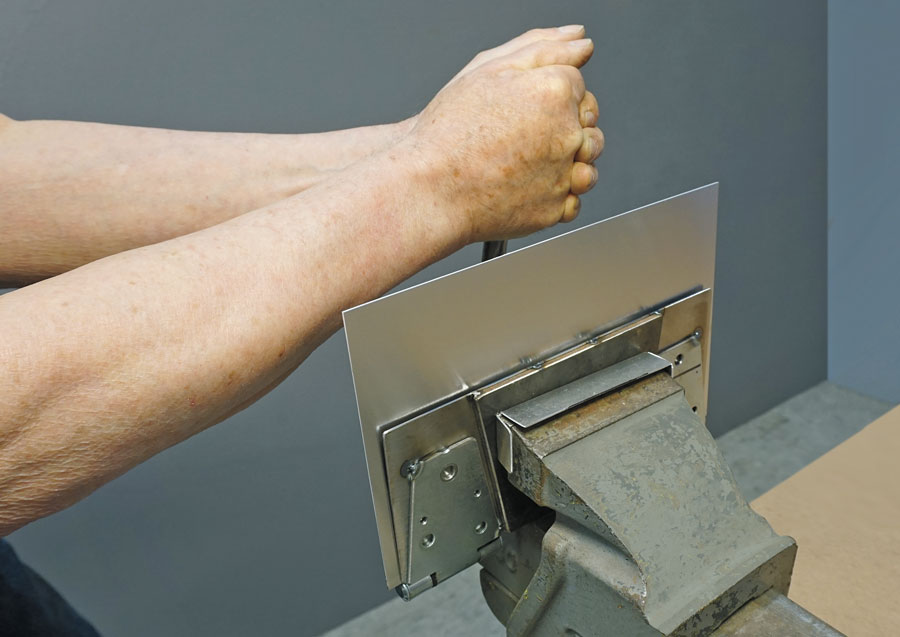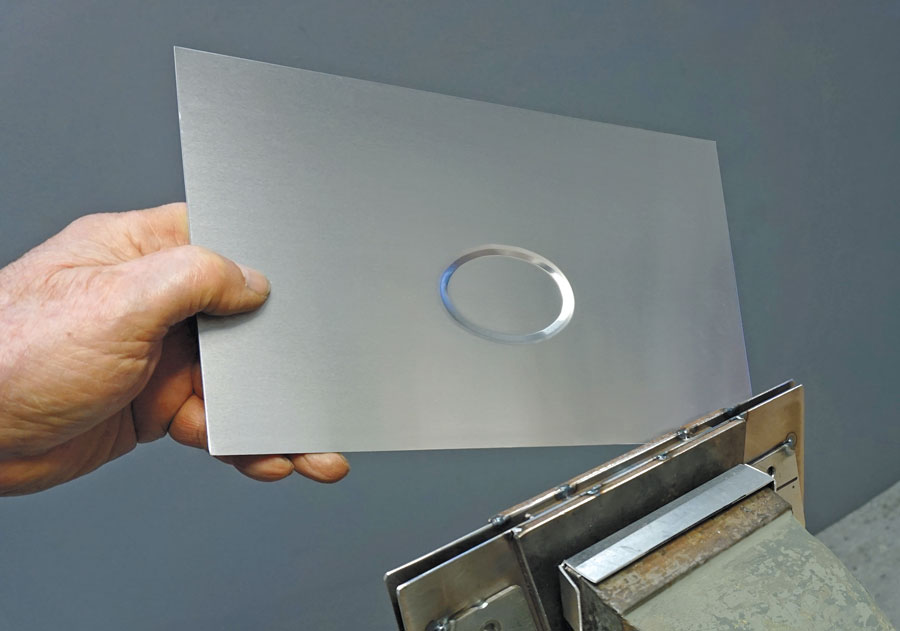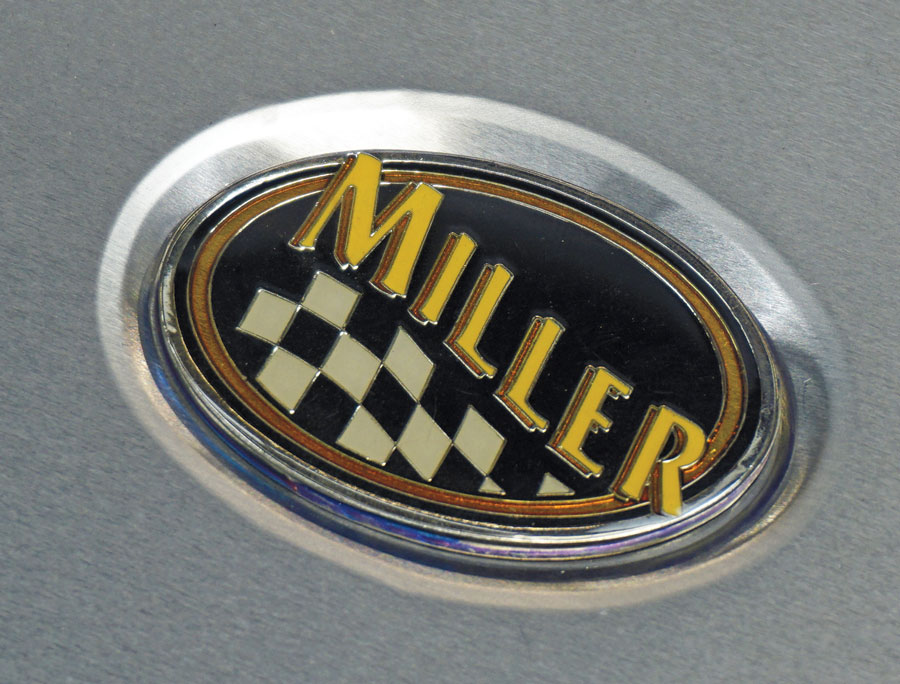
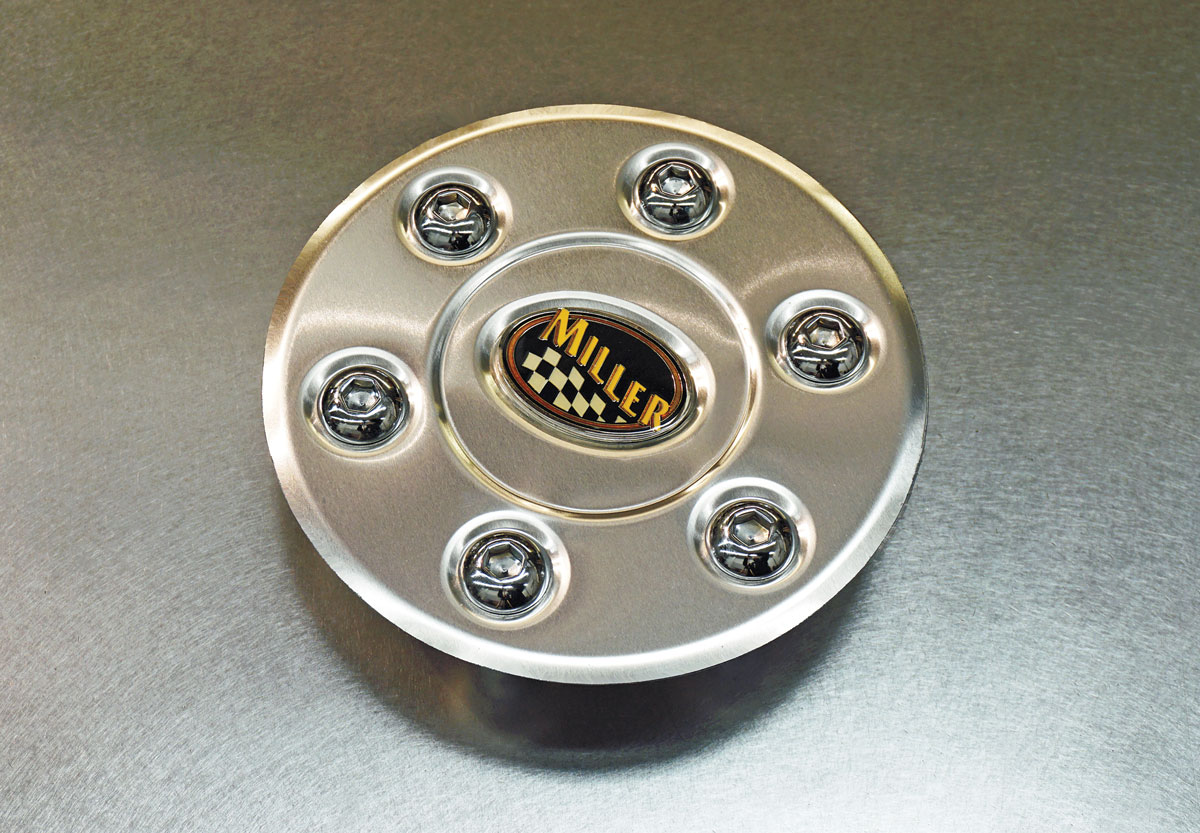
mbossing is the process of creating steps in sheetmetal panels. In this article I will show how you can add crisp details to panels with tooling that’s easy to make.
In most cases embossing is done with male and female dies. One die is placed above the metal and the other goes underneath. When the dies are pressed together, they create an embossed design in the shape of the dies.
Embossed patterns can be simple or complex. A circular shape is probably the simplest, and with any luck you may be able to use found objects (such as washers) for the dies. The dies need clearance between them (otherwise they will shear the metal); one of the challenges is aligning the male and female dies precisely. I’ll show some different ways to do this.
The first demonstration is designed to be as simple as possible and doesn’t require any welding or machining, only drilling and countersinking a few holes. The goal is to make a 1-1/4-inch-diameter recess in a piece of sheetmetal. I used flat washers for the dies, such as a standard 1-1/4-inch washer for the female die (which has an internal diameter of about 1-3/8 inch), and a fender washer with a 1-1/4-inch outside diameter for the male die. Both of these dies require a backing plate. I used 1/8-inch steel for the female die and 3/16-inch aluminum for the male.
Three 6-32 flat head screws were used to hold the backing plate to the large washer. It would have been faster to tack weld these together, but I’m showing how to make the tooling with no welding. After the washer and backing plate were joined, I drilled a 1/4-inch hole through the backing plate, centered on the hole in the washer.
The backing plate for the male die doesn’t need to be attached to the fender washer. The bolt will pull it tightly against the die and keep it centered. The primary purpose for the backing plate is to keep the washer from deforming and to flatten any distortion in the panel.
Using the dies is easy. You drill a 1/4-inch hole in the center of the area where you want the recess, then put a 1/4-inch bolt through the male and female dies with the sheetmetal sandwiched between them, and tighten a nut on the bolt until it bottoms out. You will see what a clean, professional-looking recess this generates—and it would be perfect for mounting a small emblem or plaque.
The next demonstration is making a tiny bead for repairing the hinge area of a 1932 Ford roadster door. It’s not uncommon for the hinges on these doors to work loose, and when they do they often damage the small bead in the doorskin that cradles the hinge. I’ve had to repair some of these doors, and it’s usually easier to weld in a patch with a crisply formed bead, rather than try to straighten a crushed bead on the doorskin.
I made the dies for this from 1/8-inch steel plate. The bead is a U-shape, but I shaped my dies like the letter “T” to help keep them centered as they are forming the metal. If the male die was only captured on three sides, it could shift while forming.
Since I only needed a few of these patches, I simplified the process by making the dies with no alignment pins. All the parts were aligned using their centerlines and the lower edge of the dies. I held the male die in position with two-sided tape, and used two small C-clamps on the female die. This may be unconventional, but it worked to perfection. I used a hydraulic H-frame press to do the forming, which took about 4 tons of pressure. A heavy-duty vise might have worked, but small hydraulic presses are quite affordable.
The last demonstration is making an oval recess for an emblem. I made the male and female dies from 1/8-inch steel plate, and I mounted them on a hinged fixture to ensure precise alignment. A fixture like this can be used in a vise if an H-frame press is not available.
Embossing is an easy way to add some interesting details to a sheetmetal panel and, with a little scrounging, you may be able to use found objects for your dies. Otherwise, many dies can be made with simple tools. I realize that not everyone has a complete machine shop and welding equipment at their disposal, so I like to share techniques that are accessible to nearly anyone.
